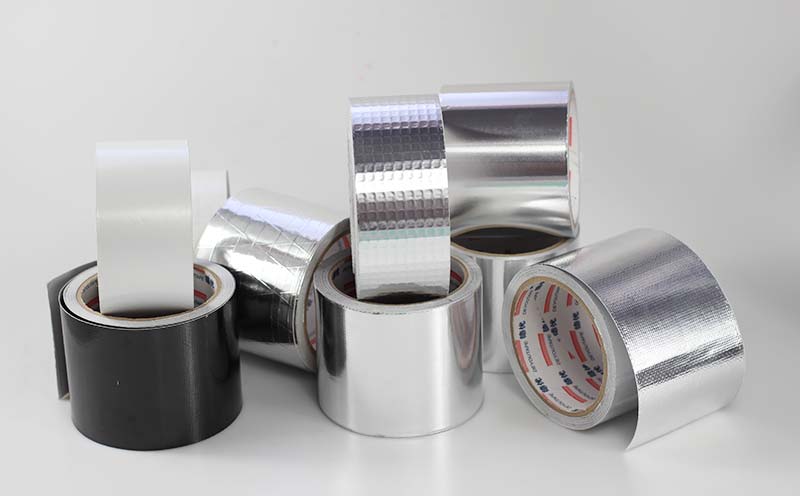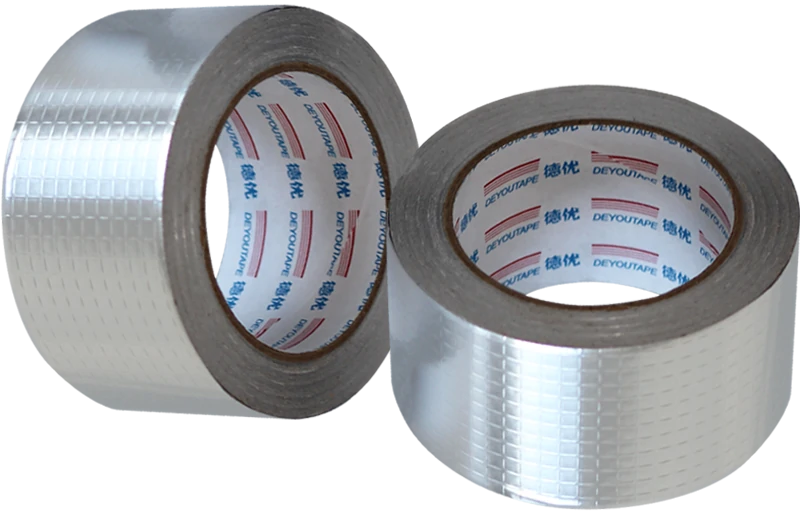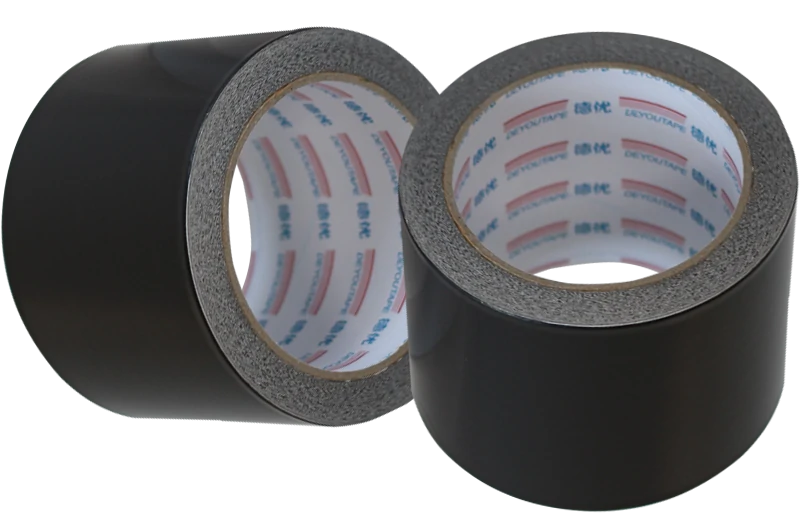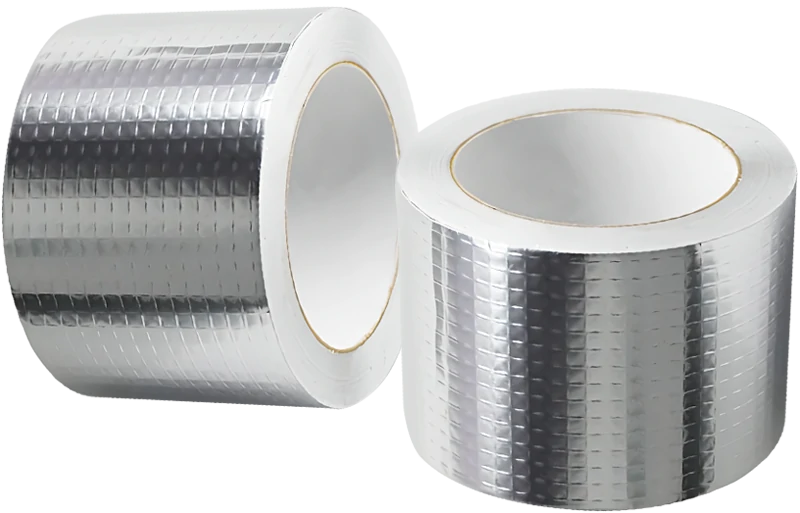Aluminum foil tape is often used for air conditioning systems due to its heat resistance, durability, and ability to provide a strong, airtight seal. It is commonly used to seal joints and seams in ductwork, ensuring that conditioned air is efficiently delivered to the intended areas without leaks. The tape's ability to adhere to metal surfaces and other surfaces makes it well suited for use in AC systems, where maintaining proper airflow and preventing air leaks are crucial for efficient and effective operation.
Why Aluminum Foil Tape is Suitable for AC/HVAC:
Moisture Barrier: The aluminum foil is impermeable to moisture, preventing condensation on ductwork, which can lead to mold growth and corrosion.
Heat Reflection: The foil reflects radiant heat, which can help to reduce heat gain in cooling systems and heat loss in heating systems, improving energy efficiency.
Conformability: The tape is flexible and conforms well to irregular surfaces and shapes, making it easy to seal around corners, joints, and other complex areas.
Requirement of Aluminum Foil tape for AC
When selecting aluminum foil tape for air conditioning applications, it's important to choose a tape specifically designed for HVAC use. Look for aluminum foil tape that is UL (Underwriters Laboratories) listed for HVAC applications, as this standard ensures the tape meets specific requirements for flame spread, smoke development, and mold growth. Additionally, consider the tape's adhesive strength, heat resistance, and durability to ensure it can effectively seal joints and seams in air conditioning ductwork. Some tapes may also have features such as UV resistance for outdoor use or flame retardancy for added safety.

Uses of Aluminum Foil Tape in Air Conditioning Aystems:
1. Sealing Ducts
Air Leakage Prevention: Aluminum foil tape is used to seal joints and seams in ductwork. This helps prevent air leaks, improving the efficiency of the HVAC system and ensuring that conditioned air reaches its intended destination.
Long-lasting Seal: The tape's strong adhesive properties and resistance to moisture make it an ideal choice for sealing ducts, which can be exposed to varying temperatures and humidity levels.
2. Insulation Applications
Insulation Wrapping: It can be used to secure insulation materials around ductwork and refrigerant lines, preventing heat loss or gain and improving overall energy efficiency.
Reflective Properties: The reflective surface of aluminum foil tape helps to enhance the performance of insulation by reflecting radiant heat, contributing to better thermal management.
3. Repairing Ductwork
Quick Fixes: Aluminum foil tape can be used for quick repairs of damaged or torn ductwork. Its strong adhesion and durability ensure that repairs hold up over time.
Versatility: It can adhere to various surfaces, including metal and plastic, making it suitable for a wide range of duct materials.
4. Moisture Barrier
Preventing Condensation: In areas where moisture is a concern, aluminum foil tape can act as a moisture barrier, helping to prevent condensation on ductwork and reducing the risk of mold growth.
Corrosion Resistance: The aluminum material is resistant to corrosion, making it suitable for use in environments where moisture is present.
5. General HVAC Maintenance
Routine Inspections: During routine maintenance, technicians may use aluminum foil tape to seal any gaps or leaks found in ductwork or insulation, ensuring optimal system performance.
Energy Efficiency: By sealing leaks and properly insulating ductwork, aluminum foil tape contributes to the overall energy efficiency of the air conditioning system, leading to lower energy bills and improved comfort.
How to Use Tape for Air Conditioning
When using aluminum foil tape for air conditioning applications, it's important to follow proper procedures to ensure effective sealing and optimal performance. Here are the general steps for using aluminum foil tape for air conditioning:
1. Clean the Surface: Ensure that the surfaces to be taped are clean and free of dust, debris, and moisture. This will help the tape adhere properly.
2. Cut the Tape: Cut the aluminum foil tape to the desired length, allowing for some overlap at joints and seams for a secure seal.
3. Apply the Tape: Carefully apply the tape to the joints and seams in the air conditioning ductwork, pressing it firmly to ensure good adhesion. Smooth out any wrinkles or air bubbles to create a tight seal.
4. Seal Gaps: Use the tape to seal any gaps or openings in the ductwork, ensuring that conditioned air does not escape and that the system operates efficiently.
5. Inspect the Seal: After applying the tape, inspect the seals to ensure they are secure and airtight.
By following these steps, you can effectively use aluminum foil tape to seal joints and seams in air conditioning ductwork, helping to maintain proper airflow and improve the overall performance of the system.
Aluminum foil tape is a valuable tool for maintaining the efficiency and integrity of AC/HVAC systems, primarily for sealing ductwork. However, using the right type of tape and applying it correctly is essential for optimal performance and long-term effectiveness. Using the wrong tape or improper application can lead to air leaks, reduced efficiency, and other problems.



